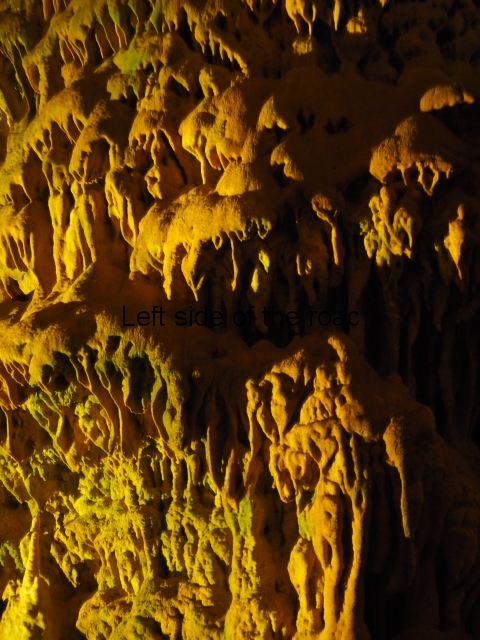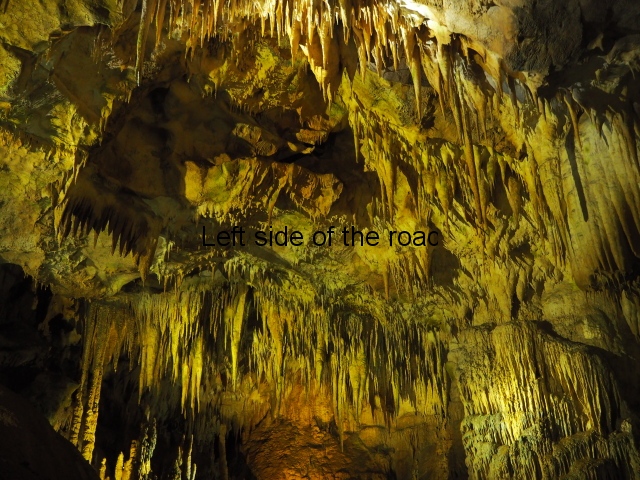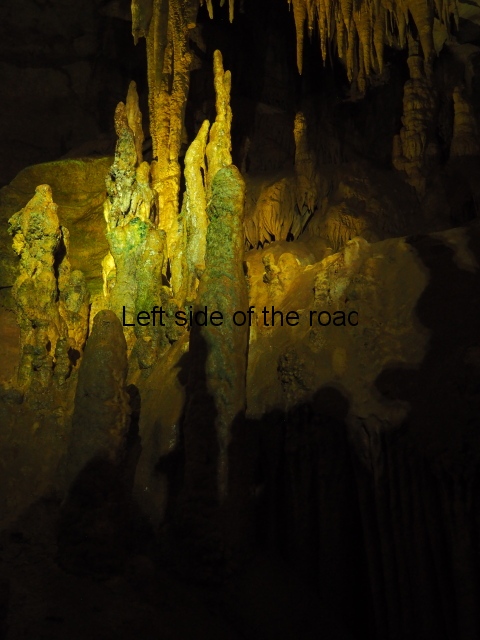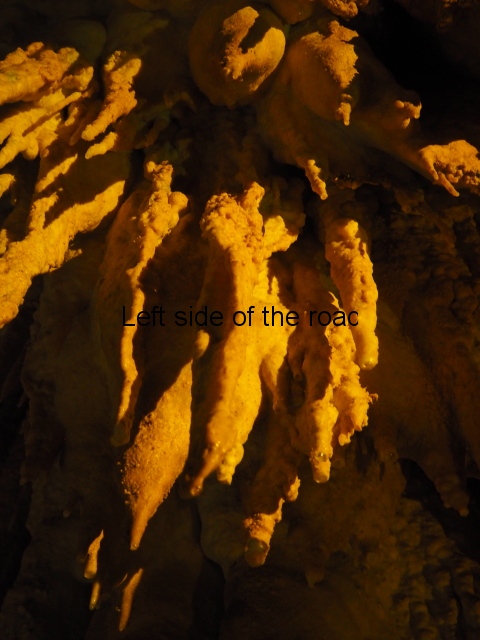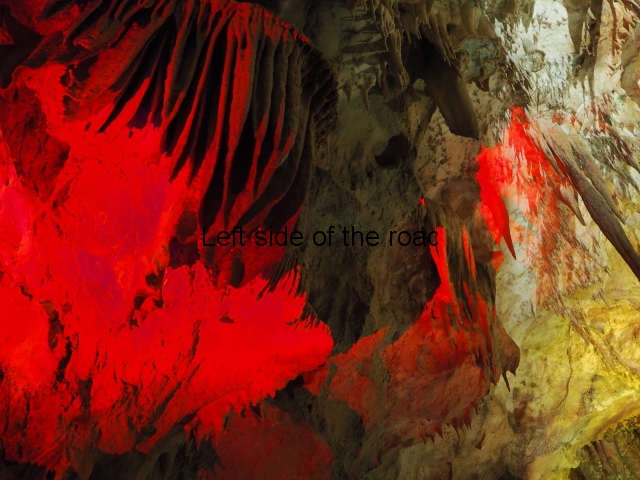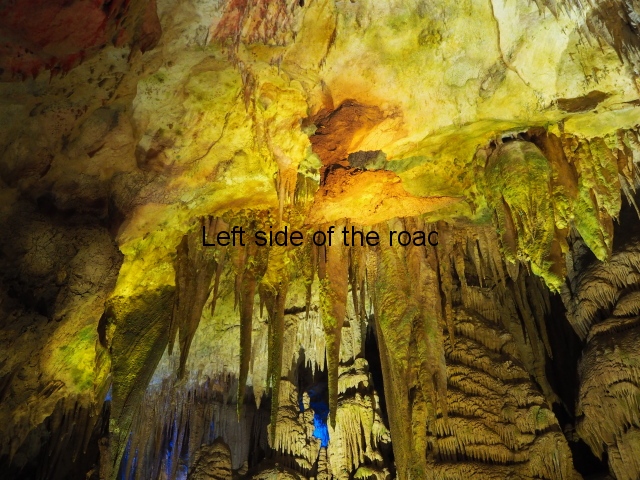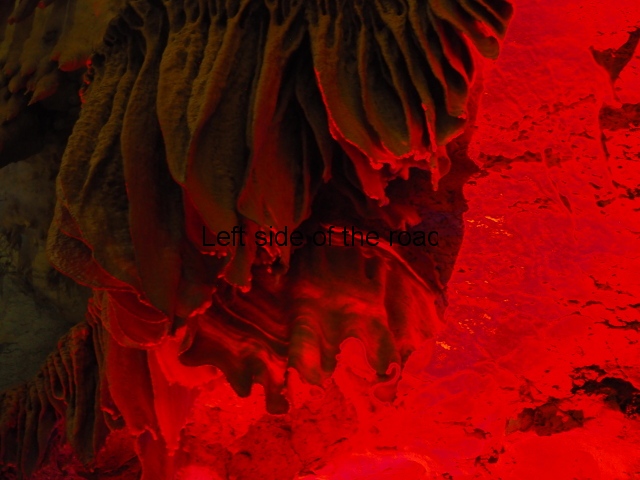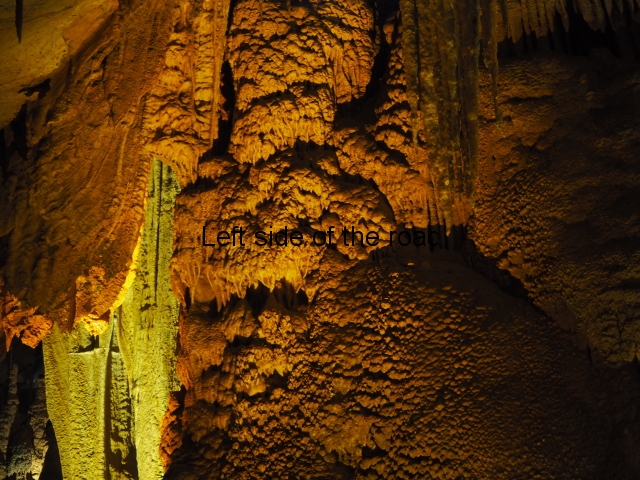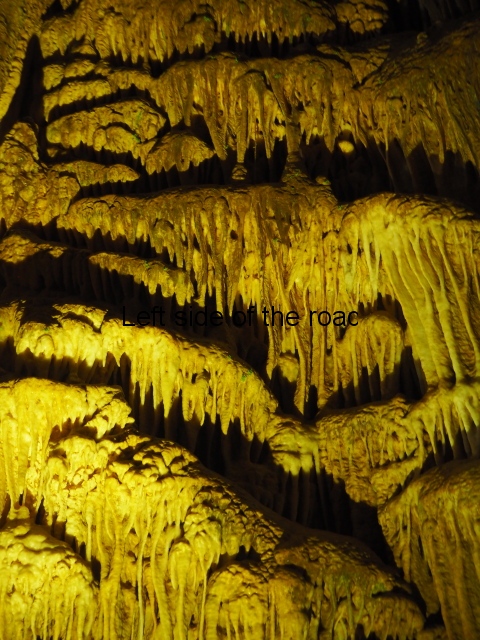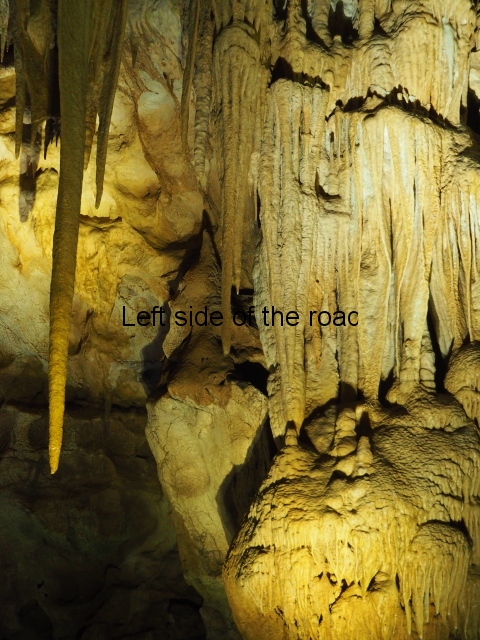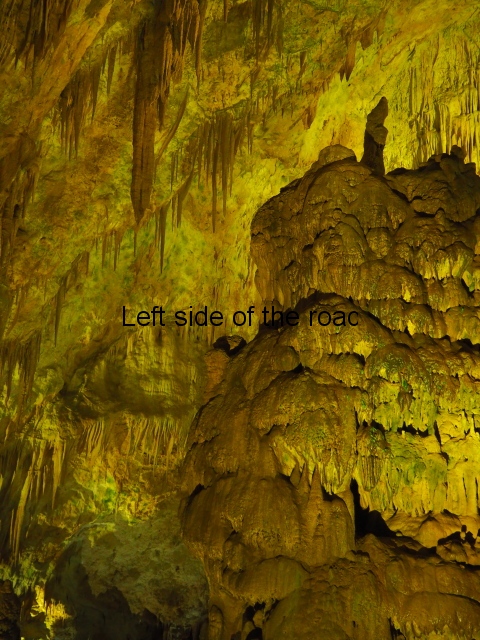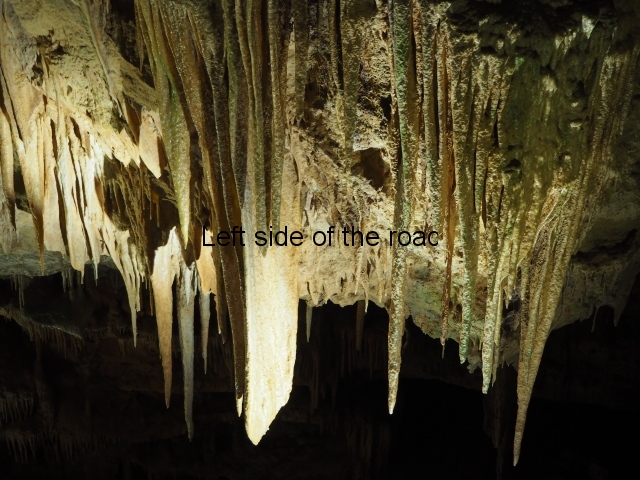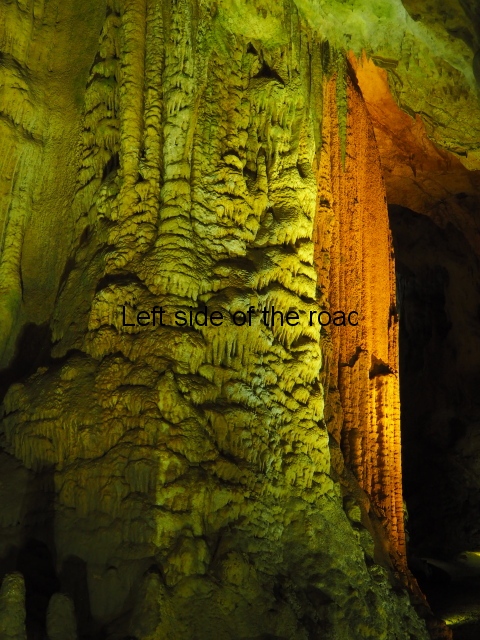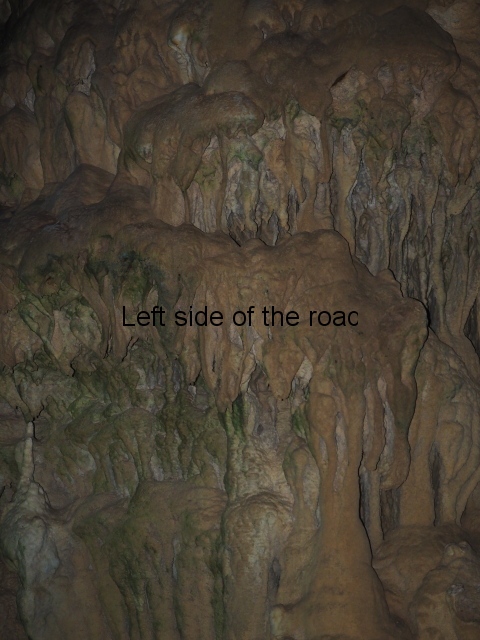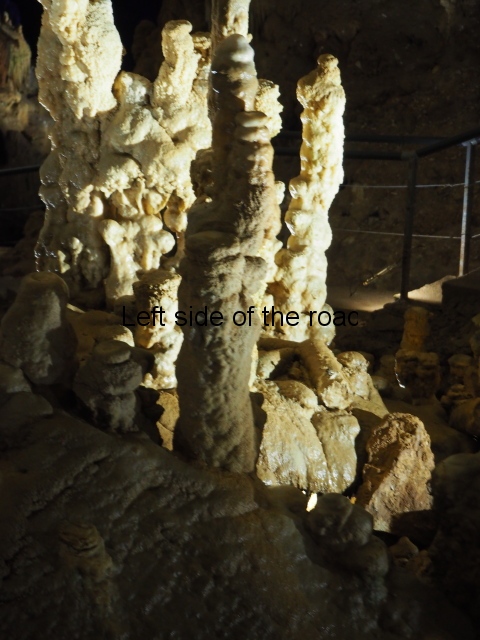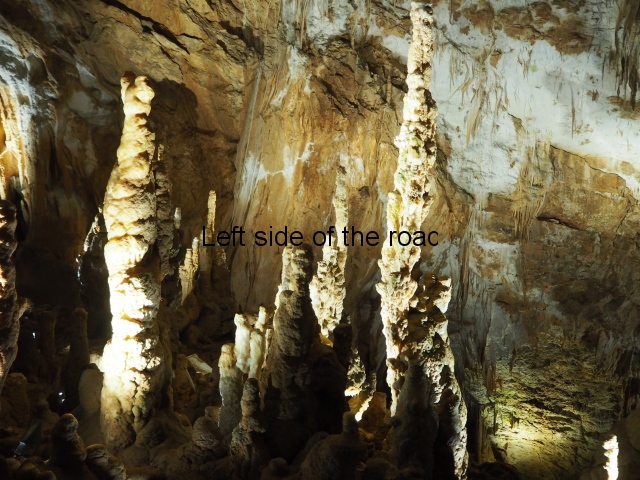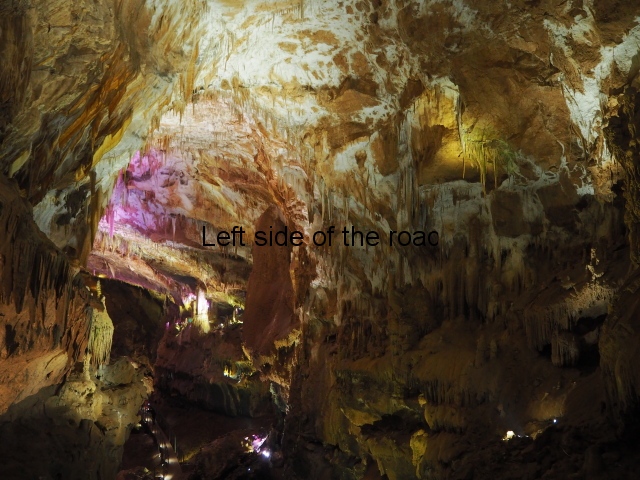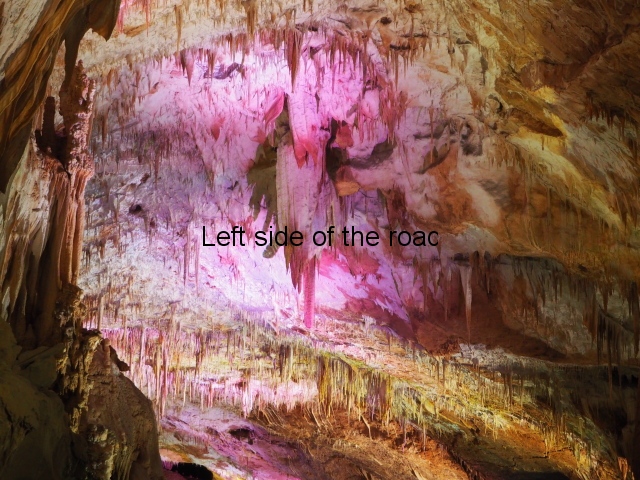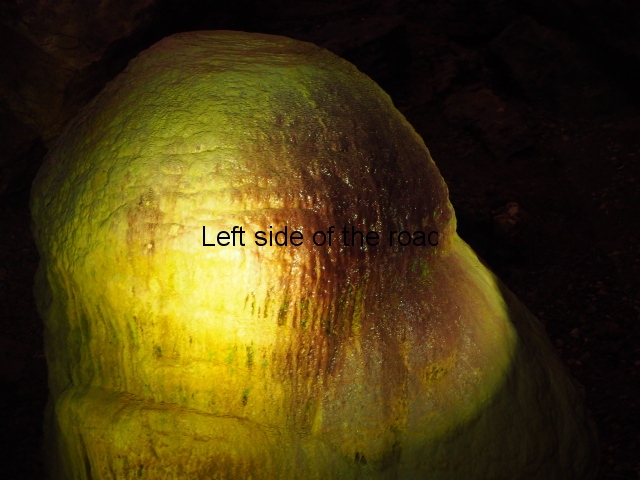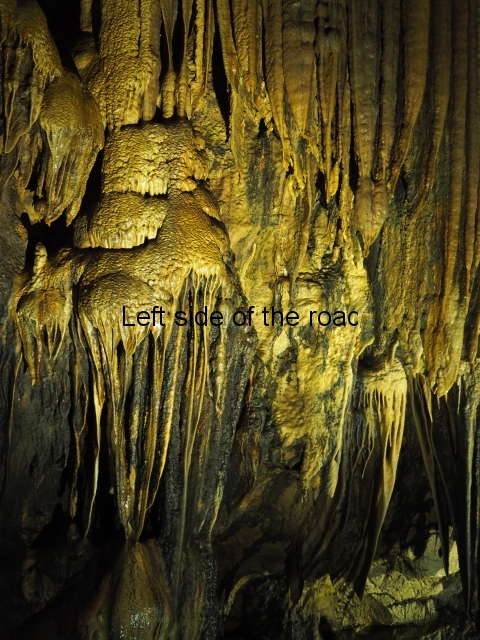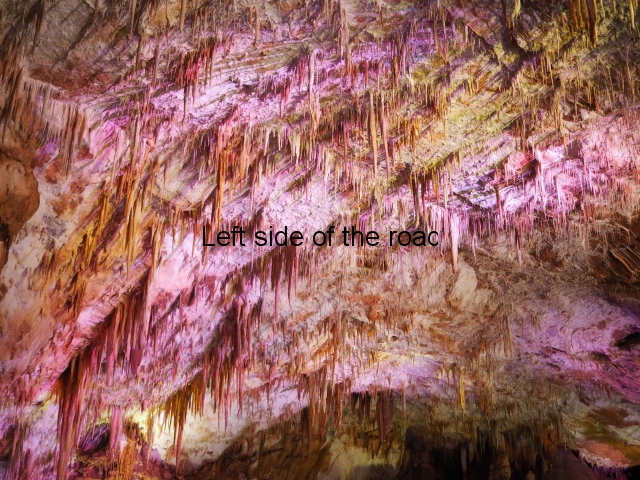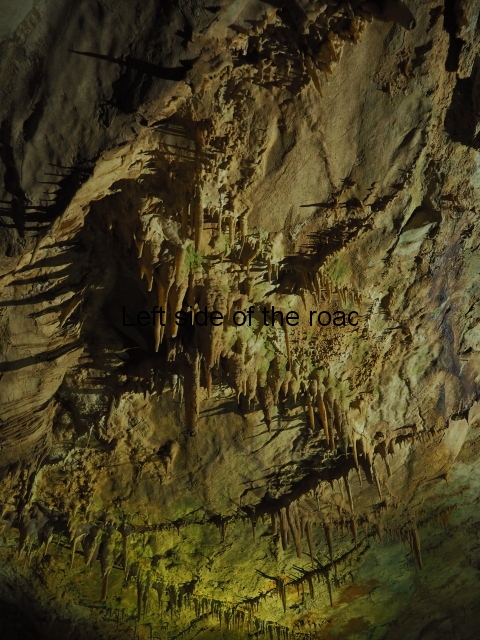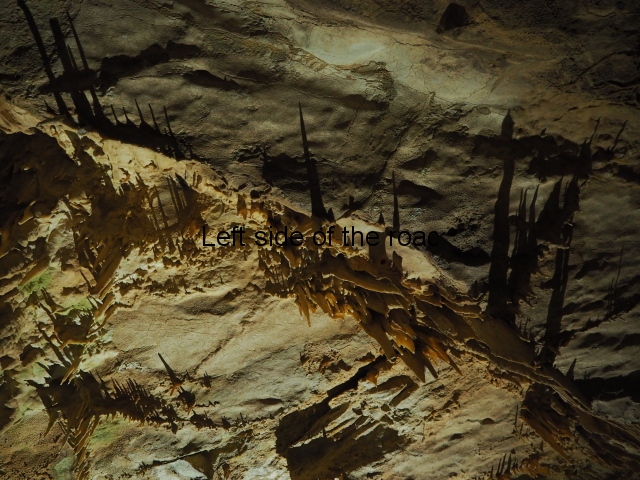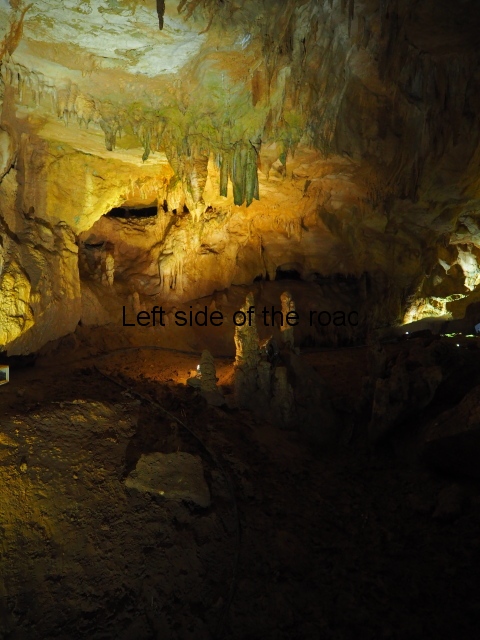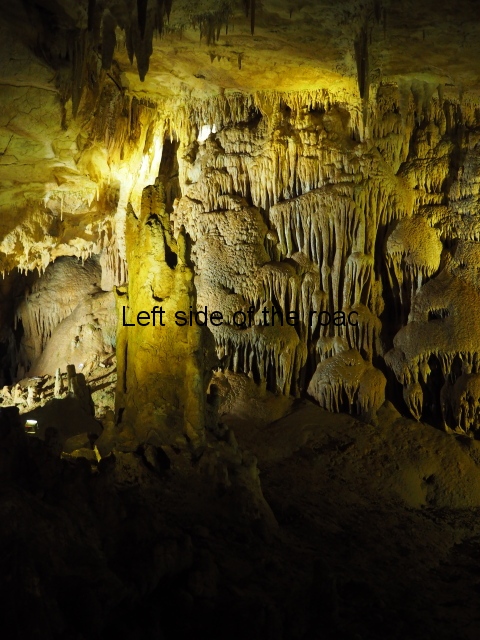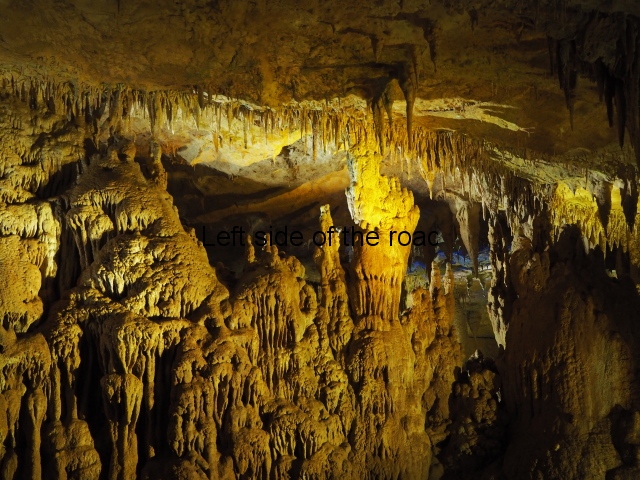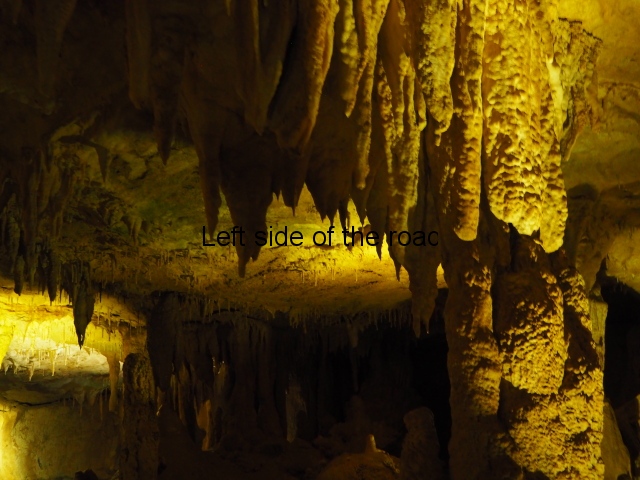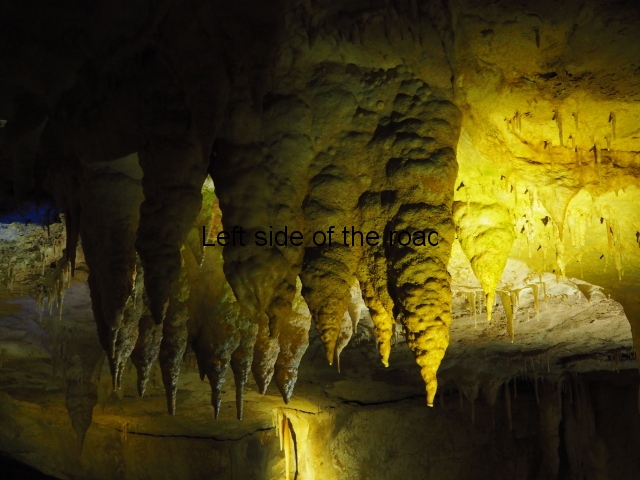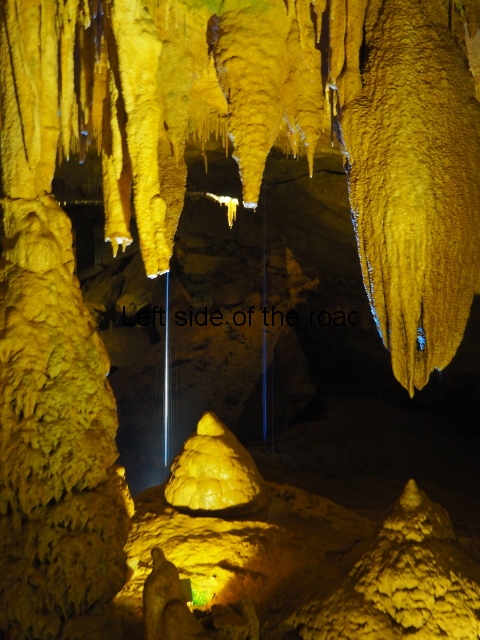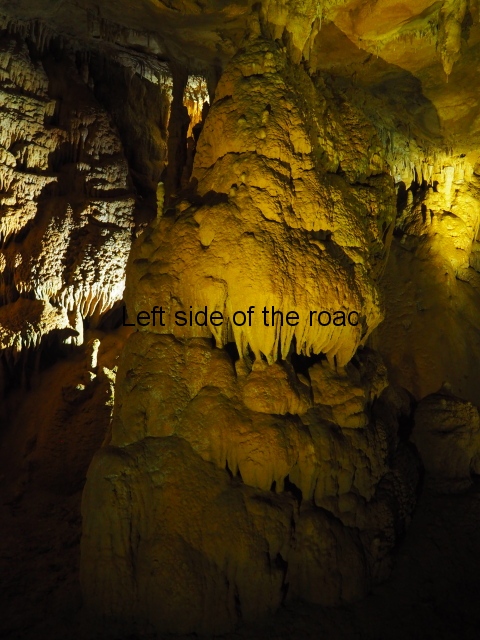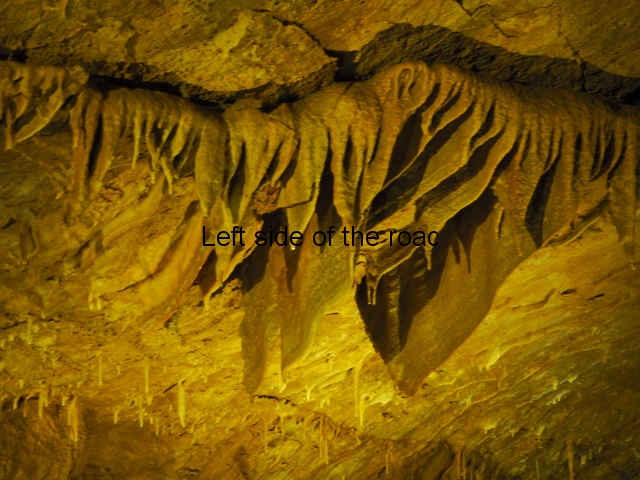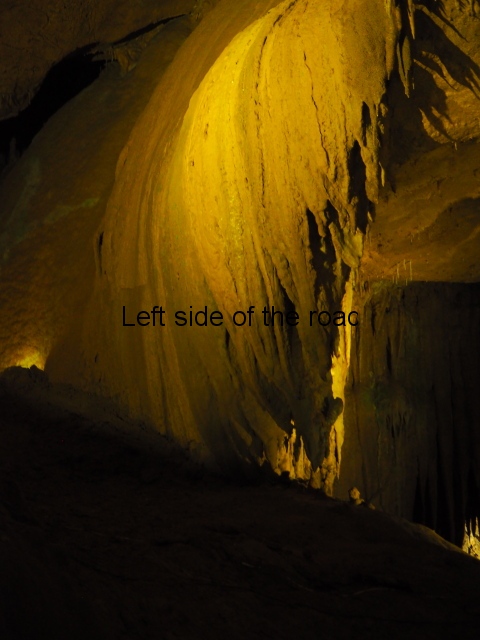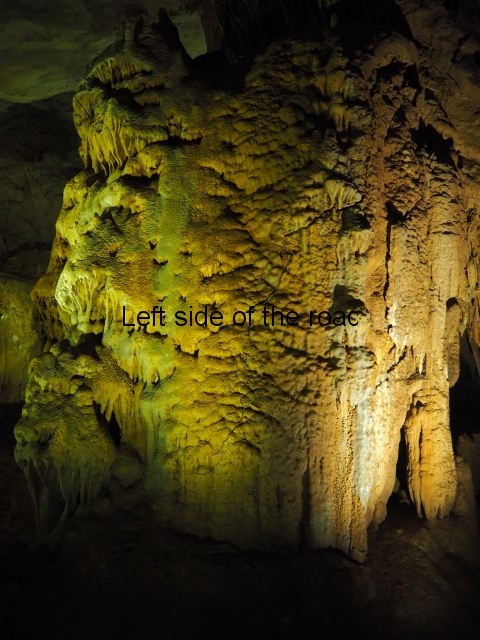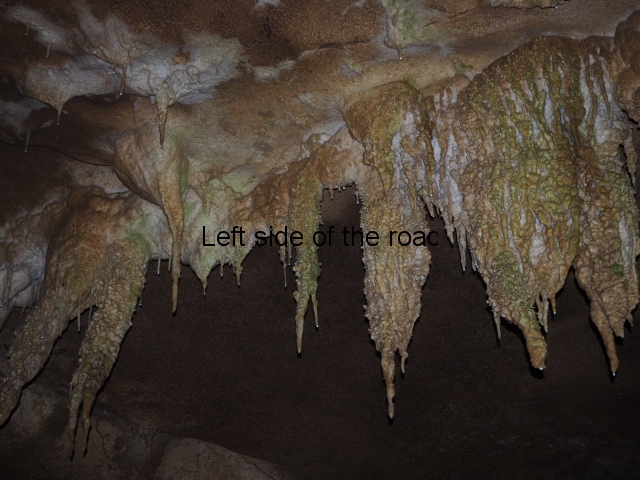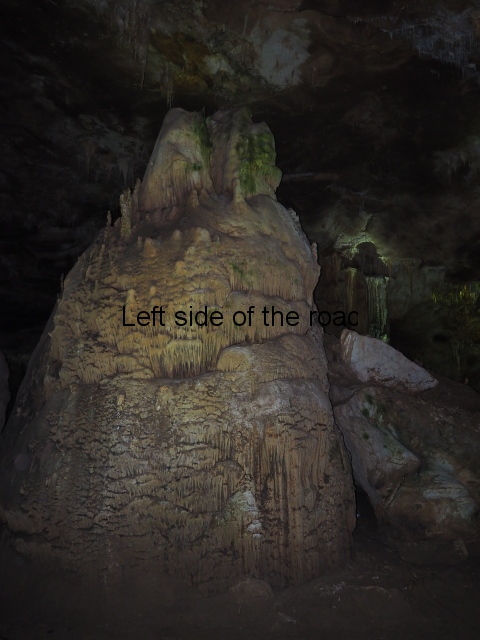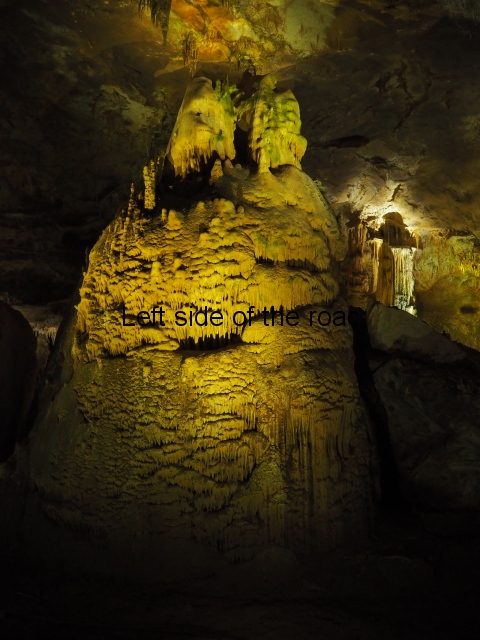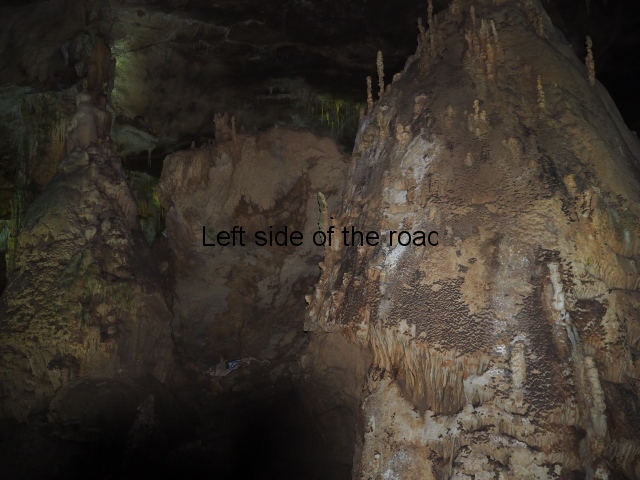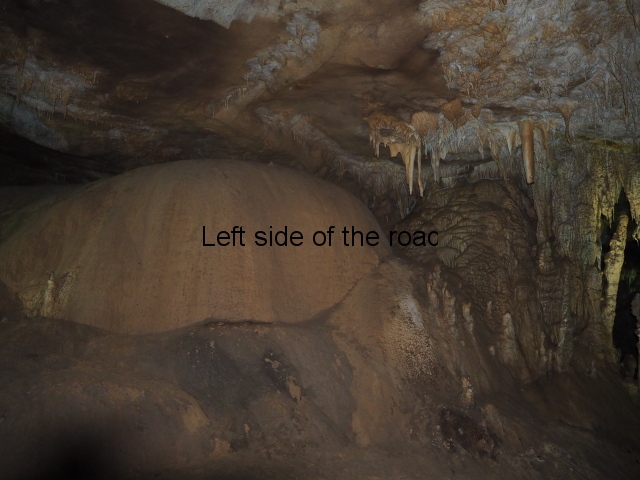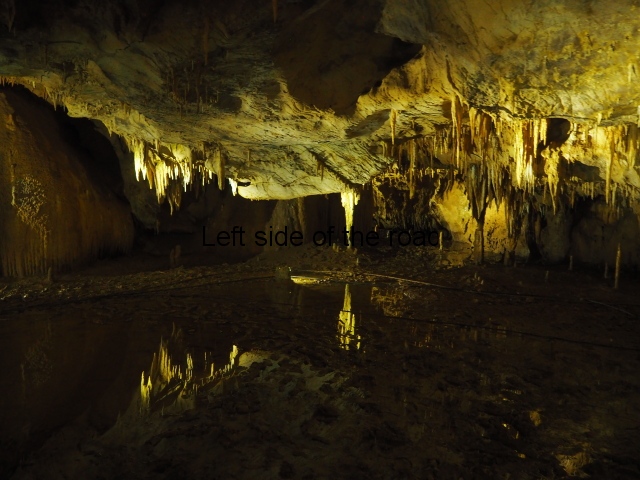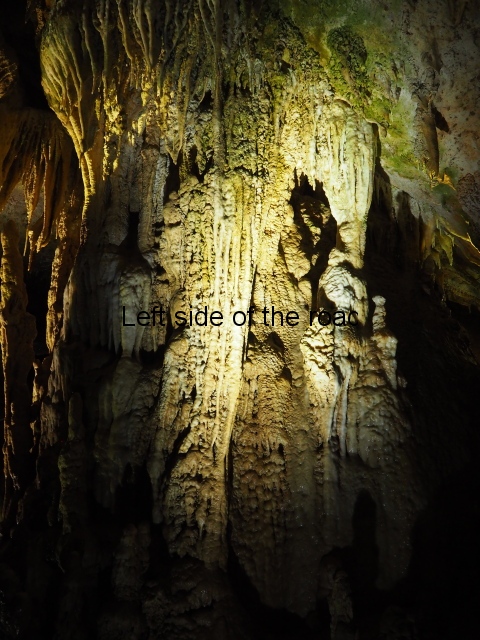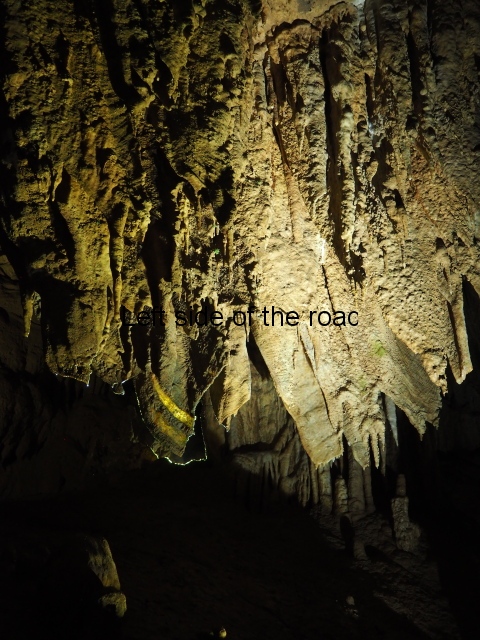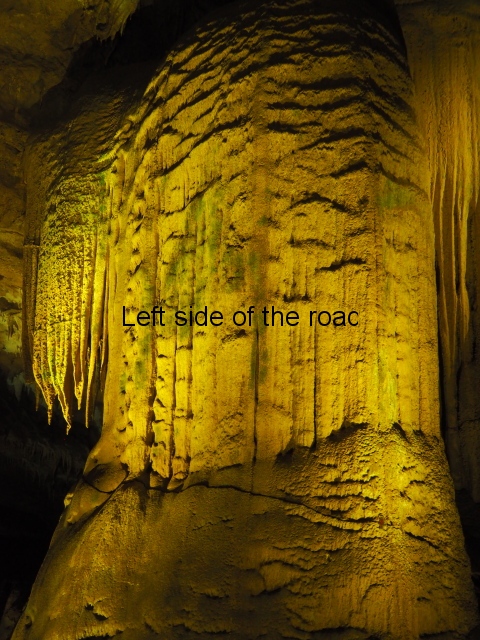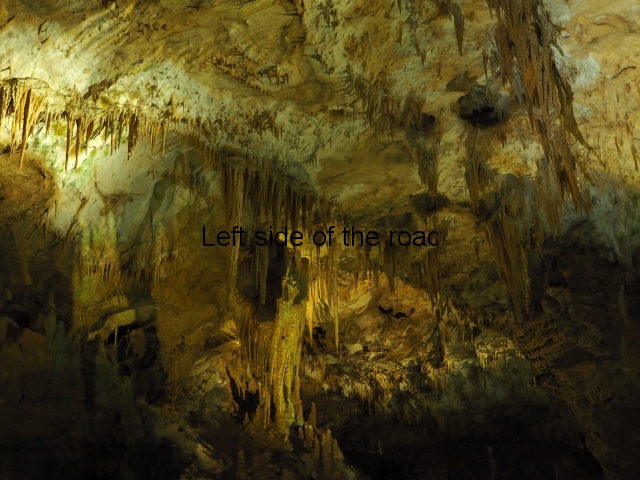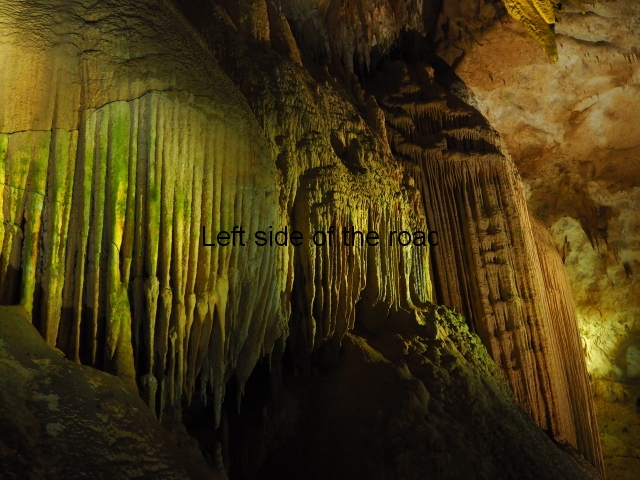
Prometheus Cave
More on the Republic of Georgia
Tskaltubo – Prometheus Cave
What’s there?
A wonderful and not too exploited and damaged natural wonder. There may be many of them in the world – after all so much of the world’s land mass was once under the sea – but that doesn’t lessen the amazement of what you see and pass that took millions of years to create.
And I think the Prometheus Cave is a good example of the different manner in which these limestone caves evolved into the natural wonders they are.
There are the classic stalagmites (rising up from the ground) and the stalactites hanging from the ceiling – the way we were taught to remember the difference when I was young was the idea that tights come down.
But as in all limestone caves there is everything in between – and more.
Cascades that look like frozen waterfalls. Huge globes of accumulated limestone which have percolated through the rock above. And shapes which are difficult to imagine how they were formed with the accumulation of a grain of sand at a time. Every time I’ve had the opportunity to visit such caves I’ve seen something I had never seen before.
Once you have an idea of the process of the construction of these weird and wonderful formations you realise how insignificant our short time is on the planet. When it takes a thousand years for a small stalactite to grow one centimetre and then you see huge pillars that have taken millions of years to reach such proportions we should reflect of the minor part we play in the Earth’s development although play the major part in its destruction.
We are told that Georgians have really embraced religion since the fall of the Soviet Union. How deep that religious feeling is I don’t know. When certainties collapse people have often, historically grasped for something to take its place. The fact that such beliefs can provide some comfort goes no way in solving the economic, social and political problems that gave rise to the uncertainty in the first place.
That being the case I always wonder how Georgians, clutching at these religious straws, rationalise locations such as the Prometheus cave. Why would a all-powerful God make something of sea creatures, then push that land high into the air and then ‘destroy’ the creation by forcing water through it? It must be great when you accept a religion (of whatever brand) as it allows you to avoid the awkward questions of life and you can just switch the brain off.
Why go?
Because if you are near by it would be a shame to miss it. You could take the approach that once you’ve seen one limestone cave system you’ve seen them all. But that’s not true. Every time you go around a corner you see something unique and unrepeatable. A result of the structured chaos that is nature.
And the way the whole cave is illuminated makes a difference. I thought, in the main, the lighting in Prometheus was used in a reasonably subtle manner. And digital cameras are great at creating a colour scheme that wouldn’t have been possible with film – unless you spent hours in a darkroom.
What’s presented in the slide show below is an idea of what you would see in an hour or so walk in the semi-darkness.
It might be worth mentioning that there are a lot of steps, both going up and down, on this expedition. It’s also wet, after all the water dripping through was what created the cave and its architectural wonders in the first place. If that’s a problem DON’T GO!
How to get there
From the nearest town of Kutaisi (unless you are staying in the spa town of Tskaltubo) take the No 30 Marshrutka from the other side of the Red Bridge to the town centre – to the west of the market area. They leave every 20 minutes, more or less, on the hour, 20 and then 40 past. The guide books say GEL 2 but the cost is GEL 1.20 (shown normally on a piece of paper above the driver’s head at the front of the mini-bus). Journey takes about 20 minutes and get off at the market area, just after you pass the large Hotel Prometheus on the left. The road into Tskaltubo goes around the outside of a park and it’s when you leave the park behind and head into the commercial part of the town that you want to get off.
When you get off the No 30 look for the No 42 – or if you look like a tourist they will look for you. This has no set timetable but will leave when there are at least 3 people. In the low season that might mean a bit of a wait – I was there for over an hour before two other people arrived looking for transport. The journey takes less than 20 minutes and you will be dropped off at the car park at the entrance to the Visitor Centre. Cost of one way journey GEL 2. The driver will wait to take you back – about an hour or so later.
Cost of visiting the cave
I thought it was against World Trade Organisation rules for there to be a different price for locals as opposed to foreigners. That is increasingly not the case as I have now experienced this situation in a number of countries.
Assuming anyone reading this is not Georgian then the prices are:
Adult entrance: GEL 23
For the boat trip at the end of the walk: GEL 17.25
Prices for children are roughly half the adult fare.
Sitting in a boat in a cave doesn’t really rock my boat but it might some. More for the children, I think.
Once out of the cave system turn left, uphill a bit, and about 10-15 minutes later arrive at the car park where the No 42 Marshrutka that brought you will be waiting.
Opening times
10.00 – 16.00
but last ticket will be sold a little more than an hour before closing time.
Closed on Mondays.
Sataplia
There’s another cave system close to Kutaisi, this time at Sataplia. This is not that easy to get to by public transport as some guidebooks would suggest. The direct marshrutka wasn’t running the day I visited and I had to take the one that dropped me off at the bottom of a 2.5km climb up quite a steep road. The road is a dead end as it only goes to the cave.
Sataplia is now open everyday, 10.00 – 18.00. Cost is GEL 17.25 for foreign adults (less than half that for locals).
There is a guided tour with set departure times. They alternate between being Georgian/Russian and Georgian/English. Apart from the cave there’s also a small ‘museum’ with information about the park (in Georgian and English) as well as a moving (and roaring) model of a meat eating dinosaur.
A cafe and viewing platform – with a glass floor – has also been constructed which provides a view down on the valley of the River Rioni as well as the town of Kutaisi.
Personally I was disappointed with Sataplia. Perhaps I had been led to expect more. I thought Prometheus by far the better of the two. And unless you have your own transport it isn’t always convenient to get to and away from.
Dinosaur footprints
Sataplia is also unique in the fact that it is the site of an small area where dinosaur footprints, dated more than 100 million years ago, can be found. What also makes it quite unique is the fact there are prints of vegetable feeders as well as meat eaters – although separated by a few thousand years.
This, I must admit, I found slightly underwhelming. The fact they are there is more interesting than the reality. Preserved footprints, however old, don’t look much more interesting than a dog’s footprint in modern cement. But then I might just be being churlish.
More on the Republic of Georgia

